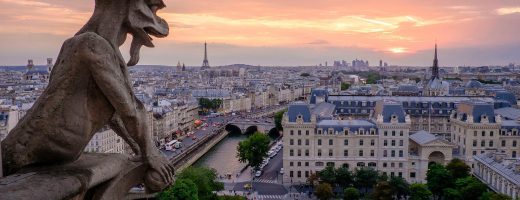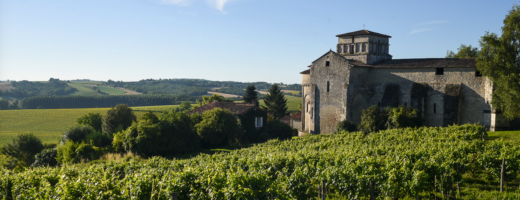Paris in the springtime is full of life, flowers, rainbow cafes and gay marriage. LGBT life here is high quality and well organized but not without some persistent opposition. From 2001-14 Bertrand Delanoë was happily the openly gay mayor of Paris. During his tenure gay marriage was approved by the government, in May 2013.
France has traditionally been fairly tolerant in matters of private morality including homosexuality and this is reflected in the country’s legislation. Any discrimination on the basis of sexual orientation in employment or service, public or private, has been prohibited since 1985. Gay and lesbian people are free to serve in the Armed Forces. On December 2004, the National Assembly approved legislation which made homophobic or sexist comments illegal. In 1997, 55% of the French considered homosexuality “an acceptable lifestyle”. In 2006, 78% considered homosexuality “as good as any other lifestyle”. The former mayor of Paris, Bertrand Delanoë, publicly revealed his homosexuality in 1998, before his first election in 2001. Gay marriage is now legal in France.
Included in this index are two non-gay stories, both located in France, (Baccarat Crystal and the Meuse-Argonne Offensive of World War1) as well as six non-gay-related photo galleries that relate to the Meuse-Argonne region and the death of my uncle, a US soldier in World War One.

Meuse-Argonne Towns of Grandpre, Vouziers and Dun-sur-Meuse
Grandpre, Vuziers and Dun-sur-Meuse are Meuse-Argonne towns that saw fierce fighting in October 1918 as American combat troops battled their way north against the retreating but dangerous Germans, sometimes in hand-to-hand and bayonet combat. All three town were devastated by artillery, grenades, poisonous gas, machine guns from both sides. The entire region of the Meuse-Argonne
Verdun Region Memorials of World War 1
Around and in historic Verdun there are numerous monuments, cemeteries, memorials and battle sites from the First World War that are preserved in remembrance of those whose lives were shattered by the horrors and bloodshed of that war. In this gallery are photos of the Douaumont Ossuary, the French National Cemetery in Verdun, the Douaumont
The ’14-’18 Museum in Romagne-sous-Montfaucon
Gallery introduction by David Laskin, New York Times, September 30, 2007 and Richard Ammon, GlobalGayz.com, 2010 In the tiny village of Romagne-sous-Montfaucon, adjacent to the Meuse-Argonne Cemetery and the Montfaucon Monument, a dedicated Dutch couple, Bridget and Jean-Paul de Vries, have opened the intirguing 14-18 Museum to display their extraordinary collection of World War I
Meuse-Argonne Villages of St Juvin and St Georges
The small villages of St Georges and St Juvin are located about three miles apart in the Meuse-Argonne region. Between the two villages runs the road that was, in October 1918 of World War 1, the temporary front line between the Germans to the north and the Americans to the south. The fighting was bloody
Meuse-Argonne Villages and Memorials
The Meuse River–Argonne Forest region in eastern France is a hilly area with forests and rivers that forms a natural barrier between the Champagne and Lorraine regions. The Argonne Forest is about 40 miles long and 10 miles wide (65 by 15 km). The highest massif rarely exceeds 650 feet (200 m) in elevation but
Meuse-Argonne Military Cemetery
This gallery displays photos of three war memorial locations in remembrance of American troops who fell during the Meuse-Argonne Offensive 1918. (1) The Meuse-Argonne American Cemetery and Memorial is a 130.5-acre (0.528 km2) World War I cemetery in France. It is located east of the village of Romagne-sous-Montfaucon in Meuse. The cemetery contains the largest
France – Paris (1)
Paris is the capital of France and the country’s largest city. It is situated on the River Seine, in northern France. It has has an estimated population of about 2,200,000. An important settlement for more than two millennia, Paris is today one of the world’s leading business and cultural centres, and its influence in politics,
France – Paris (2)
Paris is the capital of France and the country’s largest city. It is situated on the River Seine, in northern France. It has has an estimated population of about 2,200,000. An important settlement for more than two millennia, Paris is today one of the world’s leading business and cultural centres, and its influence in politics,
France – Paris (3)
Arc de Triomphe and Pere Lachaise Cemetery Paris is the capital of France and the country’s largest city. It is situated on the River Seine, in northern France. It has has an estimated population of about 2,200,000. An important settlement for more than two millennia, Paris is today one of the world’s leading business and
France – Paris: Gay Marais District
Paris is the capital of France and the country’s largest city. It is situated on the River Seine, in northern France. It has has an estimated population of about 2,200,000. An important settlement for more than two millennia, Paris is today one of the world’s leading business and cultural centres, and its influence in politics,



